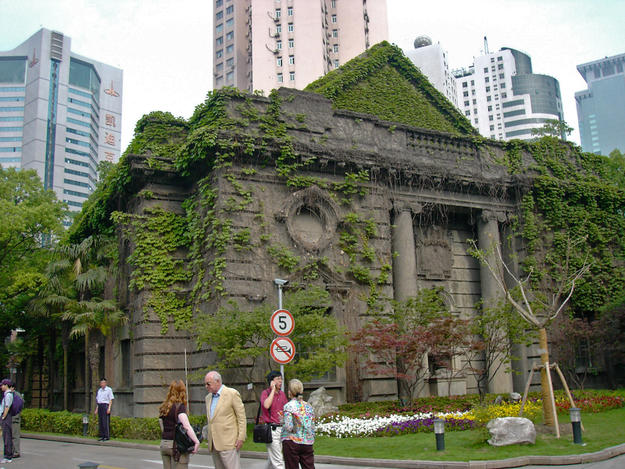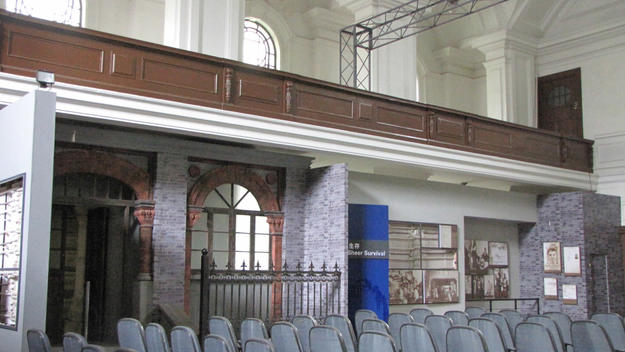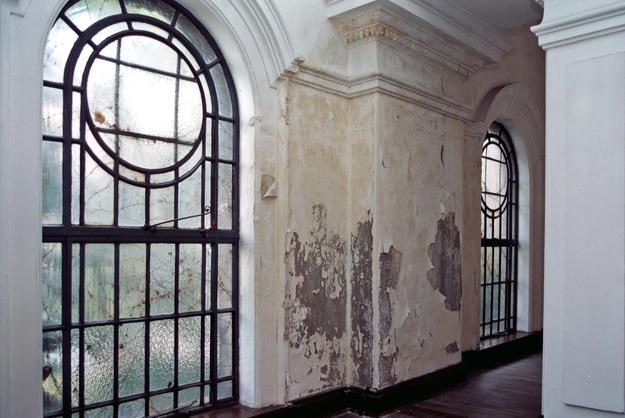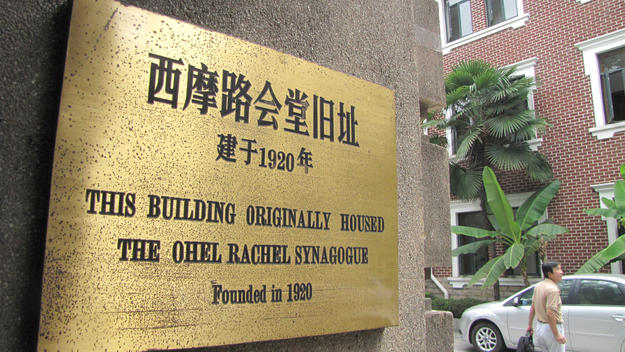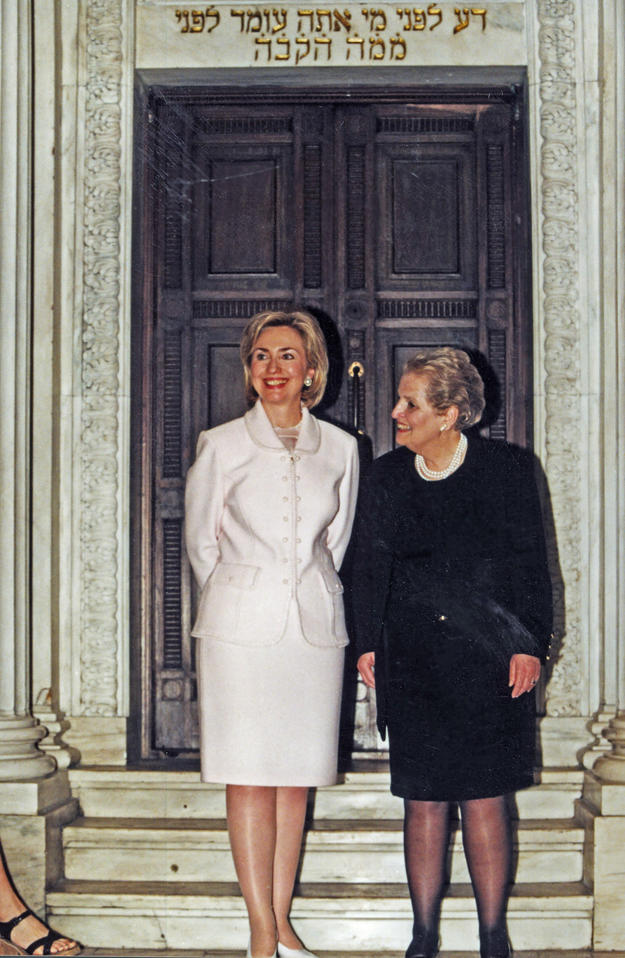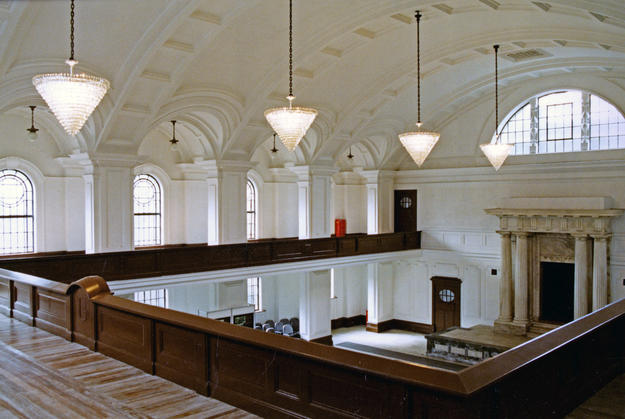Jewish communities have existed in China for over 13 centuries, but today architectural traces are hard to find. Ohel Rachel Synagogue was built in 1917 by the affluent Iraqi Jewish population of Shanghai. Though it still stands, Ohel Rachel has not escaped recent decades without damage. Of the many associated structures that used to surround the synagogue, including a library and mikvah, only the school building has survived. Shanghai’s Jewish community worshipped in Ohel Rachel Synagogue until 1952 when Chinese authorities seized the property and stripped the interior of furnishings and decoration. The windows and chandeliers were shattered during the Cultural Revolution. In 1993, Shanghai declared Ohel Rachel a historic landmark but the building functioned as offices and storage for the Communist Party Youth League for another five years. The synagogue was finally cleaned and painted in preparation for a visit from then First Lady Hillary Rodham Clinton, but no structural repairs were made.
2002 and 2004 World Monuments Watch
WMF placed Ohel Rachel Synagogue on the 2002 Watch because of structural problems and development pressures from the surrounding metropolis. The synagogue was plagued by vegetation and a roof that leaked. The Jewish community of Shanghai sought to repair the building and return it to its 1920 appearance, to be used once again as a place of worship and a museum documenting the long Jewish-Chinese history. The Jewish Heritage Program of the World Monuments Fund provided a grant for the planning stages of the project. In two years, the Jewish community of Shanghai, working closely with WMF, documented the site and created a long-term management plan. WMF Watch-listed the synagogue again in 2004 to show continued support for the project and maintain awareness of the conservation efforts in Shanghai.
In the 1930s and 1940s, Ohel Rachel Synagogue was a refuge for Jews who flocked to China in order to escape persecution in Europe. Shanghai welcomed an astonishing 17,000 Jewish immigrants during that time because of its open-door immigration policy. Due to subsequent political developments, Ohel Rachel is the only one remaining of seven synagogues that populated Shanghai: five were demolished and one has been converted into an office building. In 2008, Ohel Rachel Synagogue held its first religious wedding after more than 60 years of misuse. In its restored capacity as a synagogue and its new one as a museum, Ohel Rachel honors the long history of the Jewish presence in China.

